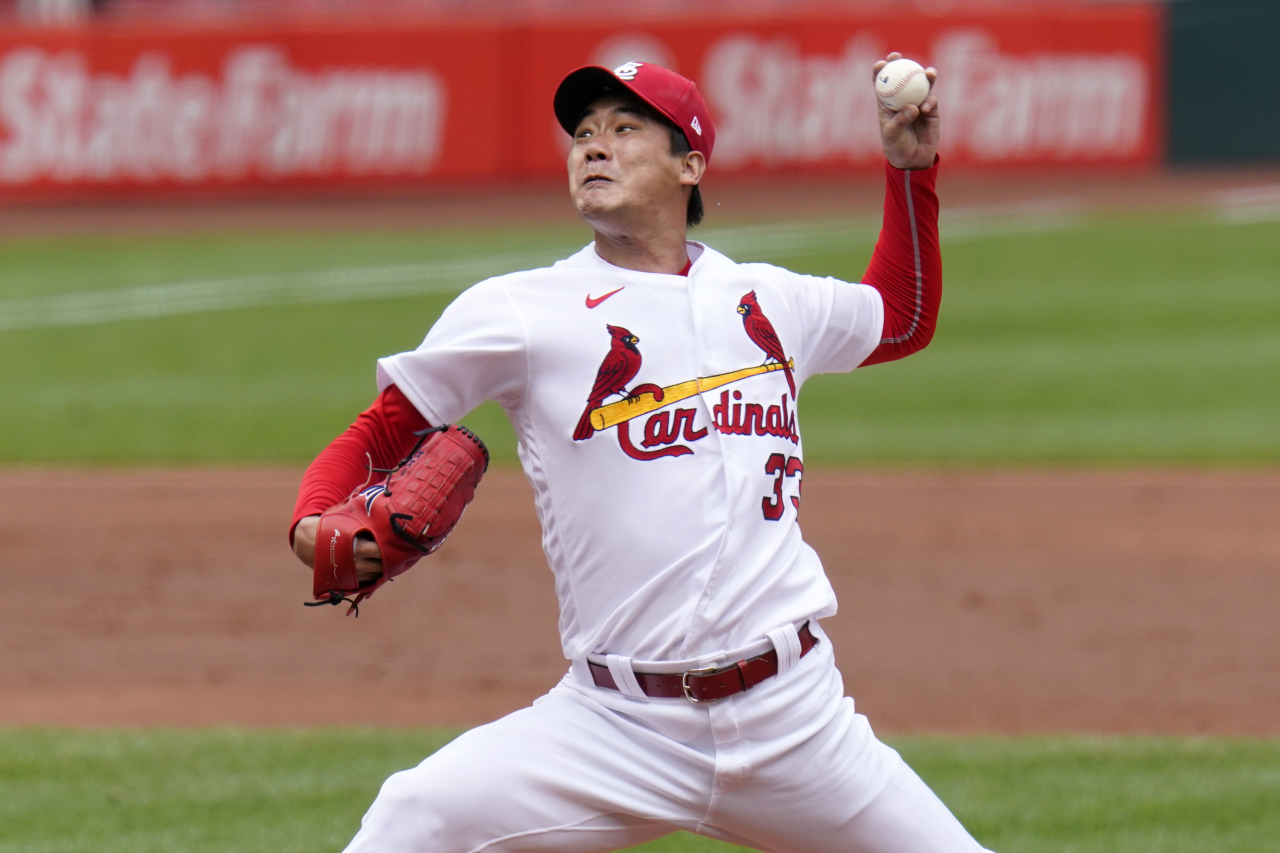 |
(Kim Kwang-hyun (AP-Yonhap) |
What is it they say about luck? That you have to be good to be lucky and lucky to be good?
Kim Kwang-hyun, the South Korean rookie starter for the St. Louis Cardinals, has been riding the wave of some good fortune this season, as he has put together some impressive numbers.
His basic statistics are outstanding. He's 2-0 in five games, including four starts, with a 0.83 ERA in 21 2/3 innings. It's the lowest in Major League Baseball (MLB) among pitchers with at least 20 innings pitched. As a starter, that ERA drops to 0.44, with one earned run in 20 2/3 innings.
Anytime a starter can keep his ERA below 1.00 is impressive, regardless of the sample size. In recent years, though, advanced statistical analysis has exposed flaws of ERA as an accurate measure of a pitcher's effectiveness. For one, defensive mistakes are taken into account -- a run scored because of an error will not be charged to the pitcher -- but great defensive plays aren't factored into ERA. It means a pitcher with a good defense behind him will have an advantage over another pitcher of similar abilities who performs before a worse defense.
Fielding independent pitching (FIP) is one metric that attempts to address that issue. FIP does exactly what it sounds like it does: assessing a pitcher's performance independent of the defense behind him, with a focus on events that the pitcher can control -- strikeouts, unintentional walks, hit-by-pitches and home runs.
Some pitchers will have an ERA that's higher than FIP, which generally means they have been unlucky and that their defense has failed him. An ERA that's lower than FIP means the opposite: that the pitcher has been fortunate, either thanks to some strong defense or to lucky bounces.
Kim has a 0.83 ERA but a 3.55 FIP, a gap that's so drastic even in a relatively limited sample size that it may be only a matter of time before Kim's luck runs out.
Kim has indeed had some help from his defense -- most notably, against the Pittsburgh Pirates on Aug. 27, when left fielder Tyler O'Neill turned two great plays at the wall to prevent extra-base hits. Right fielder Dexter Fowler made a jumping catch in the same game. There have been some hard-hit balls that have gone right at St. Louis fielders, which explains Kim's unsustainably-low batting average on balls in play (BABIP) of .200. The league average is .289.
That Kim doesn't strike out a ton and doesn't miss a lot of bats also indicates regression may be on the way soon. He has struck out 13.3 percent of the batters he's faced so far, compared to the league average of 23.2 percent. He's allowing 80.4 percent contact rate on his pitches, while the league average is 75.2 percent.
Looking only at pitches thrown into the strike zone, Kim is allowing a contact rate of 93.8 percent, almost a full 10 percentage points higher than the league average. Kim's overall whiff rate, or swinging strikes per swing, is 21.6 percent, below the league average of 24.4 percent.
After his most recent start, Tuesday against the Cincinnati Reds, Kim was asked about his shockingly low ERA. It's unlikely he'd studied his advanced data before or after this game, but Kim acknowledged he's been quite fortunate.
"In English, I may say, 'God bless me,'" Kim said. "Some really well-hit balls have gone straight to my fielders, and they've obviously caught other balls, too."
Kim said he isn't putting too much stock into how poorly batters have fared against him, noting that this is "not a normal season" because of the coronavirus pandemic. The regular season only began in July, instead of the customary March, and the season will only go on for 60 games, down from the usual 162.
"I think the hitters aren't in their optimal form," he said. "I think the real challenges will arise next season. I'll regard this season as a stepping stone for next year." (Yonhap)








![[Today’s K-pop] Blackpink’s Jennie, Lisa invited to Coachella as solo acts](http://res.heraldm.com/phpwas/restmb_idxmake.php?idx=644&simg=/content/image/2024/11/21/20241121050099_0.jpg)